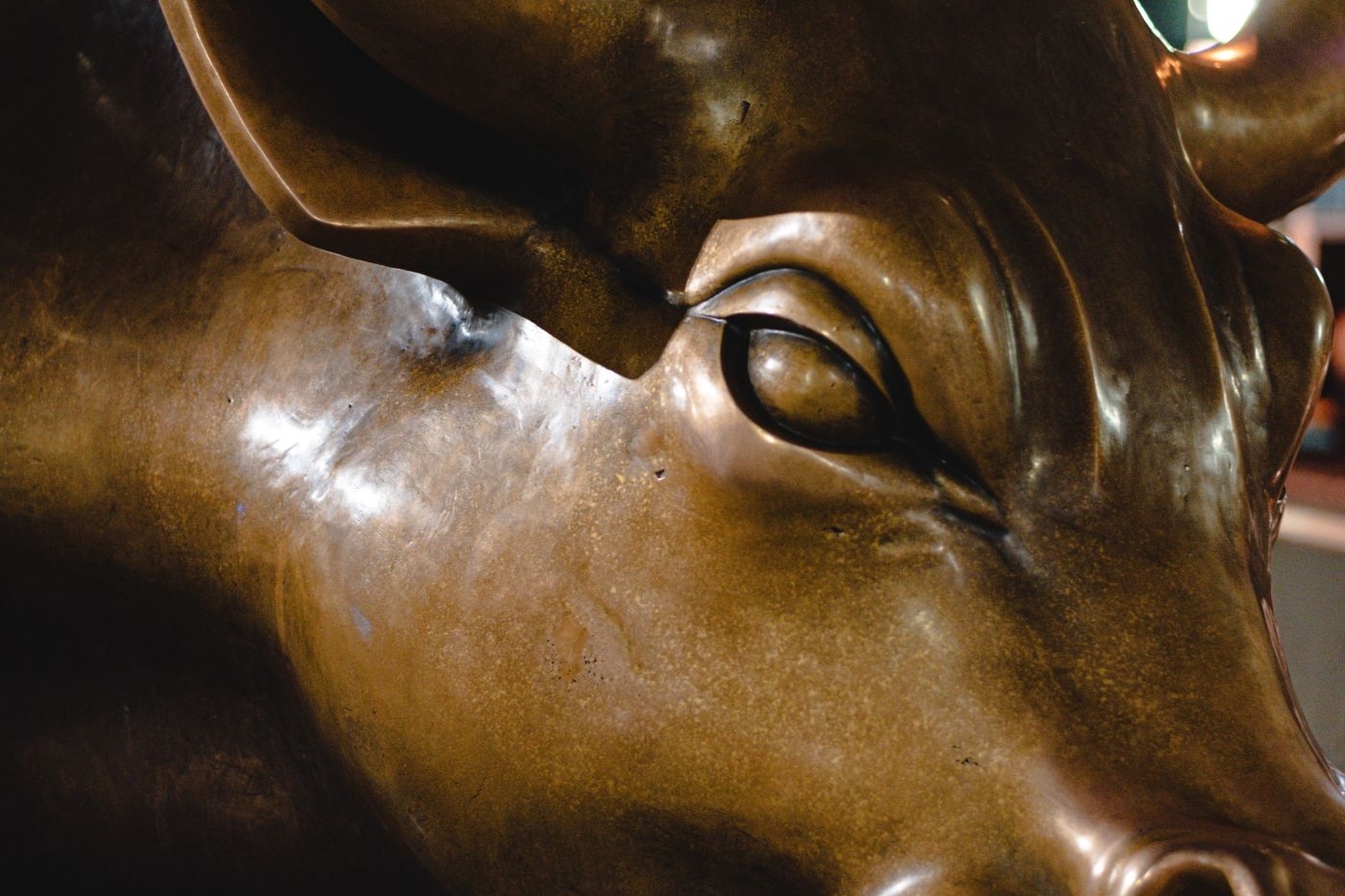
What is the difference between a bull vs bear market?
Bull and bear are common terms used in the stock market to describe how the markets are performing and what direction stock prices are heading.
What is the difference between a bull and bear market?
The main difference between a bull and a bear market is the direction of the movement: in bull markets, asset prices rise, whereas, in a bear market, asset prices fall.
Like many market folklore, the origin of the terms is disputed. Legend has it that the names originate from each animal’s attack pattern: the bull strikes with a headbutt, sending its enemies upward, whereas bears strike their claws in a downward motion.
Whether that’s true or false, the names have stuck to a point that the animal names have become synonymous with being either optimistic or pessimistic about stock market performance or the whole economy. One can say he is either bullish or bearish on a stock, or on gross domestic product (GDP) growth, the housing market, inflation, etc.
Key highlights:
- A bull market is characterised by rising prices, whereas a bear market is characterised by falling prices
- Timing the tipping point between a bull or bear trend can be extremely tough
- Tough influenced by fundamentals, bear and bull markets are determined mostly by investor psychology
The trend is your friend, and so goes the old trading adage. Identifying and trading along market trends can be key to getting better investment returns. Just like in sailing, you usually don’t want to be going against the current when trading. Therefore, one must know when to be bullish and when to be bearish.
But what does bullish or bearish market sentiment mean?
Understand the difference between bull and bear markets and learn how to protect your portfolio in both of these situations.
What is a bull market?
A bull market takes place when optimism becomes the norm and investor confidence is high. Share prices begin to rise as buyers decide to take on more risk, believing that future prospects will be better and that they’ll be able to sell their positions at an even higher price later on. If it truly is a bull market, then that indeed does happen and the cycle continues, until the optimist view becomes unsustainable, the market changes and investors turn bearish.
How to identify a bull market?
Identifying bull and bear markets are more art than science, as there’s no exact definition of a bull or bear market. Some investors point out that on bull markets we tend to see higher highs and higher lows, but that’s not always the case.
Legendary investor Howard Marks writes in his bestselling book The Most Important Thing that there usually are three stages in a bull market:
- When a few forward-looking people begin to believe things will get better
- When most investors realise improvement is actually taking place
- When everyone concludes things will get better forever
Market regimes can be tough to define by exact terms, but one can definitely feel them once they’re occurring. If people around you are feeling optimistic about the economy, you’re most likely in a bull market.
What is a bear market?
If bull markets take place when investors are optimistic, bear markets happen when pessimism takes over. There seems to be no price low enough for which to sell assets, as sellers crowd out buyers.
Usually, correlations tend to 1 as investors sell off each and every asset of their portfolios, fearing that prices might fall even further and that they might need lots of cash to withstand the tough times. This is why contrary to popular belief, having a diversified portfolio doesn’t seem to do much to protect investors during bear markets.
How to identify a bear market?
Like bull markets, there’s no exact way to determine if you’re in a bear market. Lower lows and lower highs are usually common and a sign of bears taking over bulls, but the most important thing is the overall feeling of pessimism that arises in investor sentiment.
Quoting Howard Marks once again on the three stages of a bear market:
- When just a few thoughtful investors recognise that, despite the prevailing bullishness, things won’t always be rosy
- When most investors recognise things are deteriorating
- When everyone’s convinced things can only get worse
Just like in bull markets, if you can tell that people are overtly pessimistic around you, you are probably near or at the inflection point of a downward trend.
What investing strategies may work in a bull vs bear market?
In a bull market, pretty much anything an investor might buy in the financial markets is going to rise. The only assets likely to underperform are those that are usually considered as a safe haven: treasury bills, gold and other precious metals.
Making money in a bear market is where it gets tricky. As a matter of fact, most investors would be happy enough if they managed to not lose money during a bear market.
One of the ways investors make money in a bear market is to sell short. However, the risk/return ratio of short selling doesn’t make for a very attractive bet: gains are capped at 100%, while losses are uncapped and can easily blow up funds. Therefore, most investors stay away from short selling.
Other ways to profit from a bear market include buying out of the money put options as a form of portfolio insurance, as proposed by famous writers and investors Nassim Taleb and Mark Spitznagel. This strategy protects investors from sudden shocks like flash crashes, but in a prolonged bear market, it’s likely to lose even more, as the bought puts that expire are worthless.
One strategy that has gained prominence is the use of CTAs with managed futures, where professional investors look for assets that are trending and invest along with the trends. Though hard for retail investors to mimic, there’s a growing number of managed futures ETFs coming into the market, making it a strategy available for everyone.
If you are looking to invest in Australian ETFs or U.S. ETFs, look no further.
Macroeconomic factors for bull vs bear markets
Though macroeconomic factors do play a role in market regimes, they are not the main issue that drives them. In fact, it’s generally used only as ex-post justification for what already dominates investor psychology.
Bull markets do usually correlate with growing GDP rates, a strong labour market, positive consumer sentiment and falling interest rates, while in most bear markets these economic indicators are commonly inverted, with rising unemployment, GDP growth rates going negative and interest rates soaring. However, one should not take these indicators at face value.
In fact, markets can interpret them completely differently from the standard interpretation. GDP growth is supposed to be a good thing, but it might drive consumer spending up, thus creating inflation, which is bad for markets. High unemployment is supposed to be a terrible thing, however, that might lead the central bank to lower interest rates to stimulate the economy, thus making markets soar.
Counterintuitive as it might be, macro data can almost always be used to justify both bullish and bearish stances for the market. Whether the main interpretation will send prices up or down, depends on investor sentiment, and that’s what one should have in mind.
Bull vs bear market FAQs
Is it good to buy stocks in a bear market?
The answer to this question might not be as straightforward as one would think. While bear markets do give way to low market prices, they can always get even lower. Therefore, investors should be smart about which stocks to buy, selecting ones that are likely to withstand the bear market and bounce back even higher than they were before. Generally speaking, successful investors don’t try to find the lowest low of a bear market, they buy when they can assess value on the cheap. If you can do that and manage to handle some market volatility for a while, then by all means it’s good to buy stocks in a bear market.
How long do bear markets last?
There’s no exact length of time for how long a bear market should last, but they don’t usually last over 20 months. However, the recovery might take a while: because of the 1929 depression, the broad US market didn’t make new highs till WW2, and if you bought Japanese stocks in the 1980s, you’re likely still in the negative.

Stella is a markets analyst and writer with almost a decade of investing experience. With a Masters in Accounting from the University of Sydney, she specialises in financial statement analysis and financial modelling. Previously, she worked as an equity analyst at Australian finance start-up, Simply Wall St, where she took charge of the market insights newsletter sent out to over a million subscribers. At Stake, Stella has been key to producing the weekly Wrap articles and social media content.

